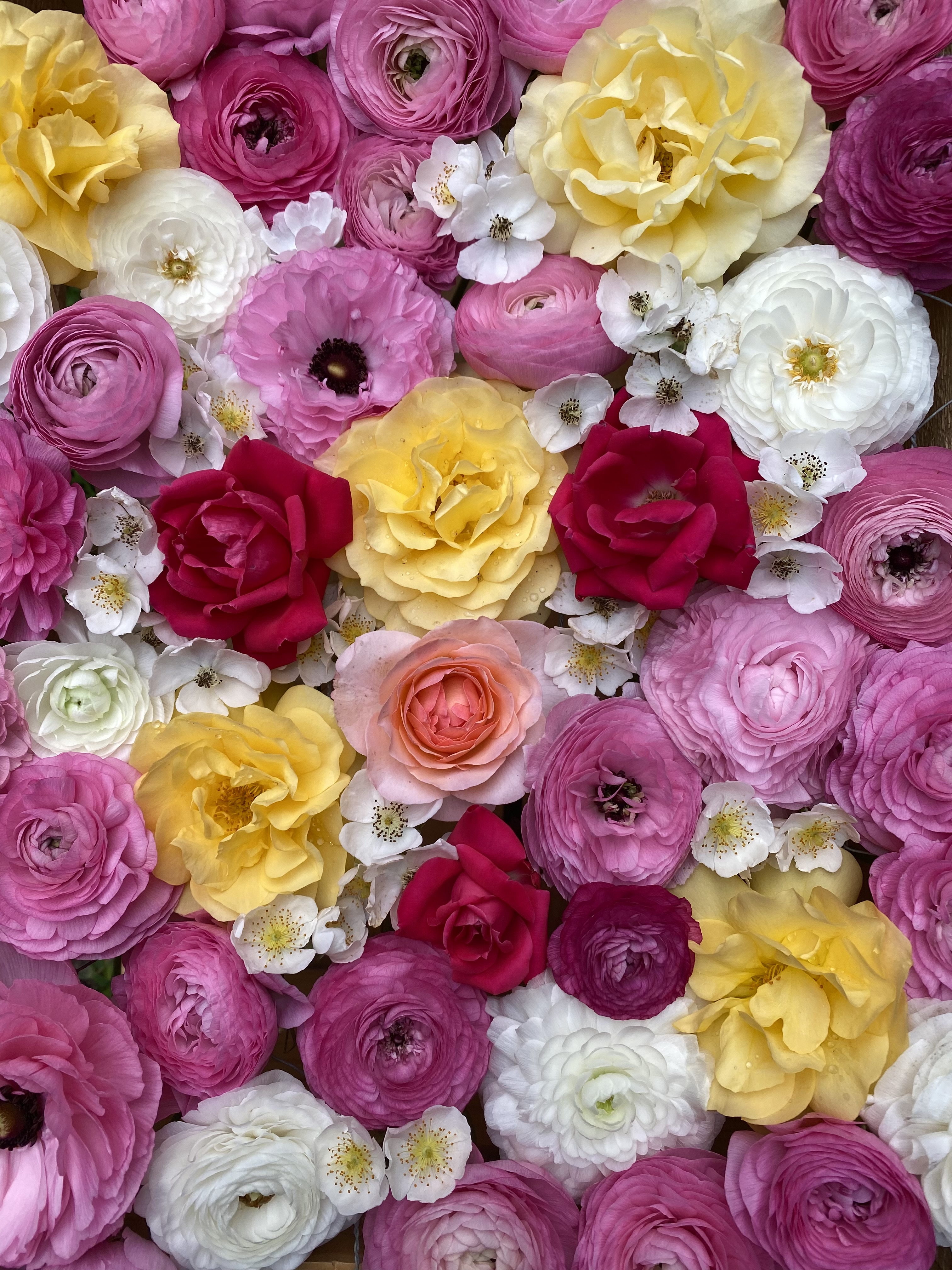How to Grow Tulips
Sep 26th 2022
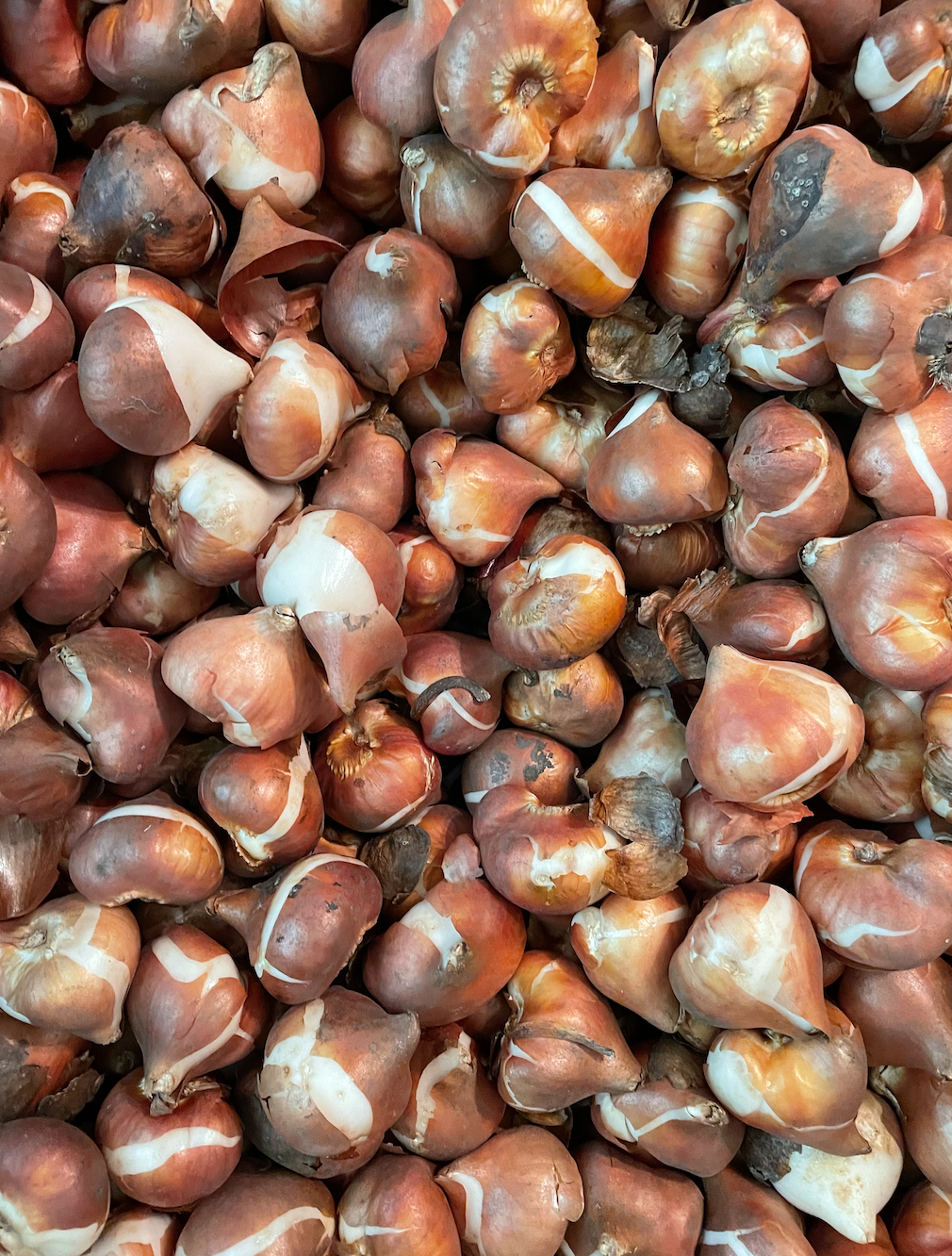
Tulips require at least 6 weeks of cold weather to flower properly, so if you live where winters don’t get down to freezing temperatures, you’ll need to order pre-chilled bulbs.
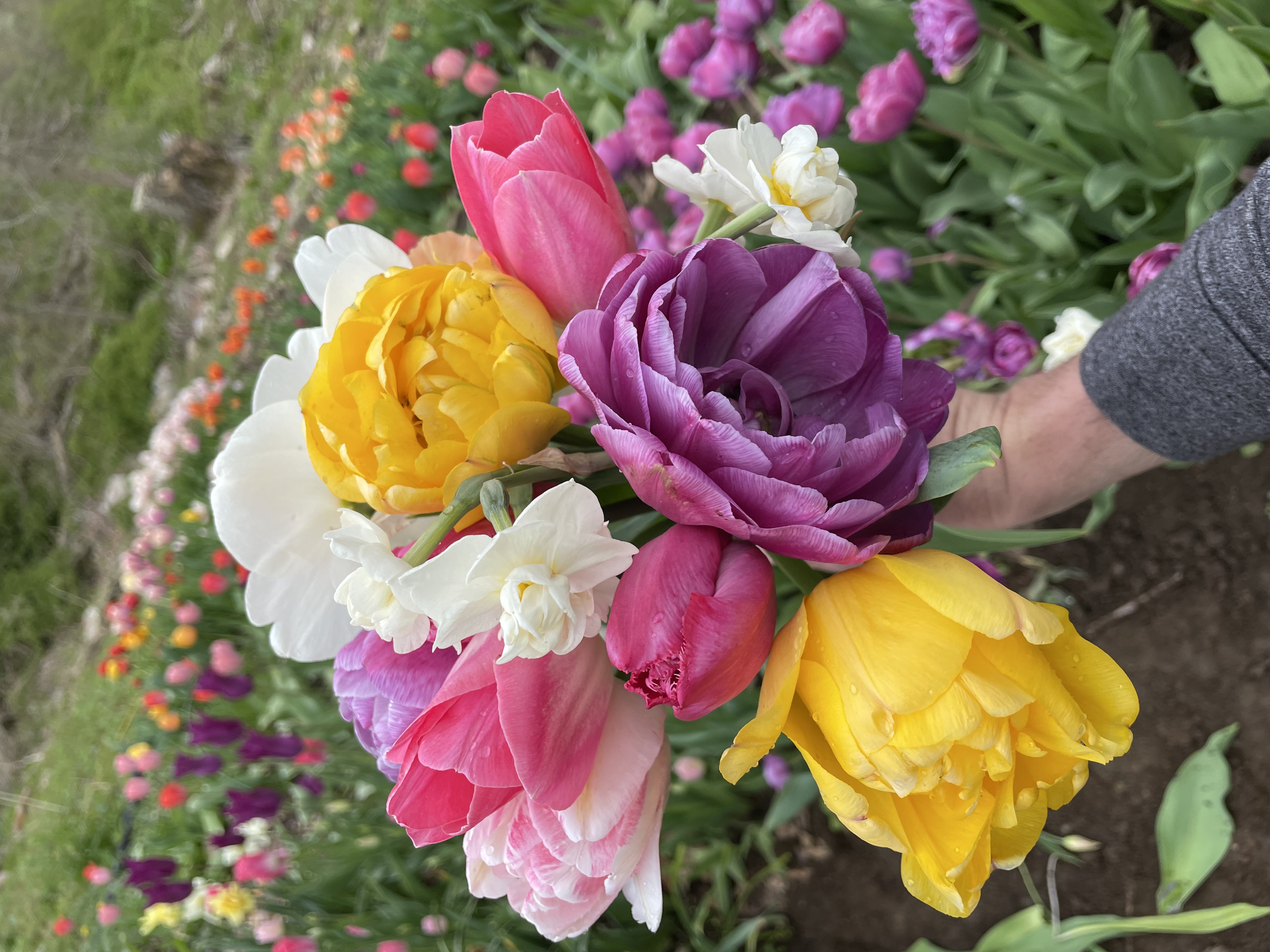
In my opinion, tulips make the most impact when planted in larger amounts. I recommend planting clumps of at least 10 bulbs (or the trench method like the picture below). Simply dig out a generous circle of soil, about 6 in deep, mix in a little organic bulb fertilizer and compost, and then plant your bulbs roughly three times as deep as they are tall.
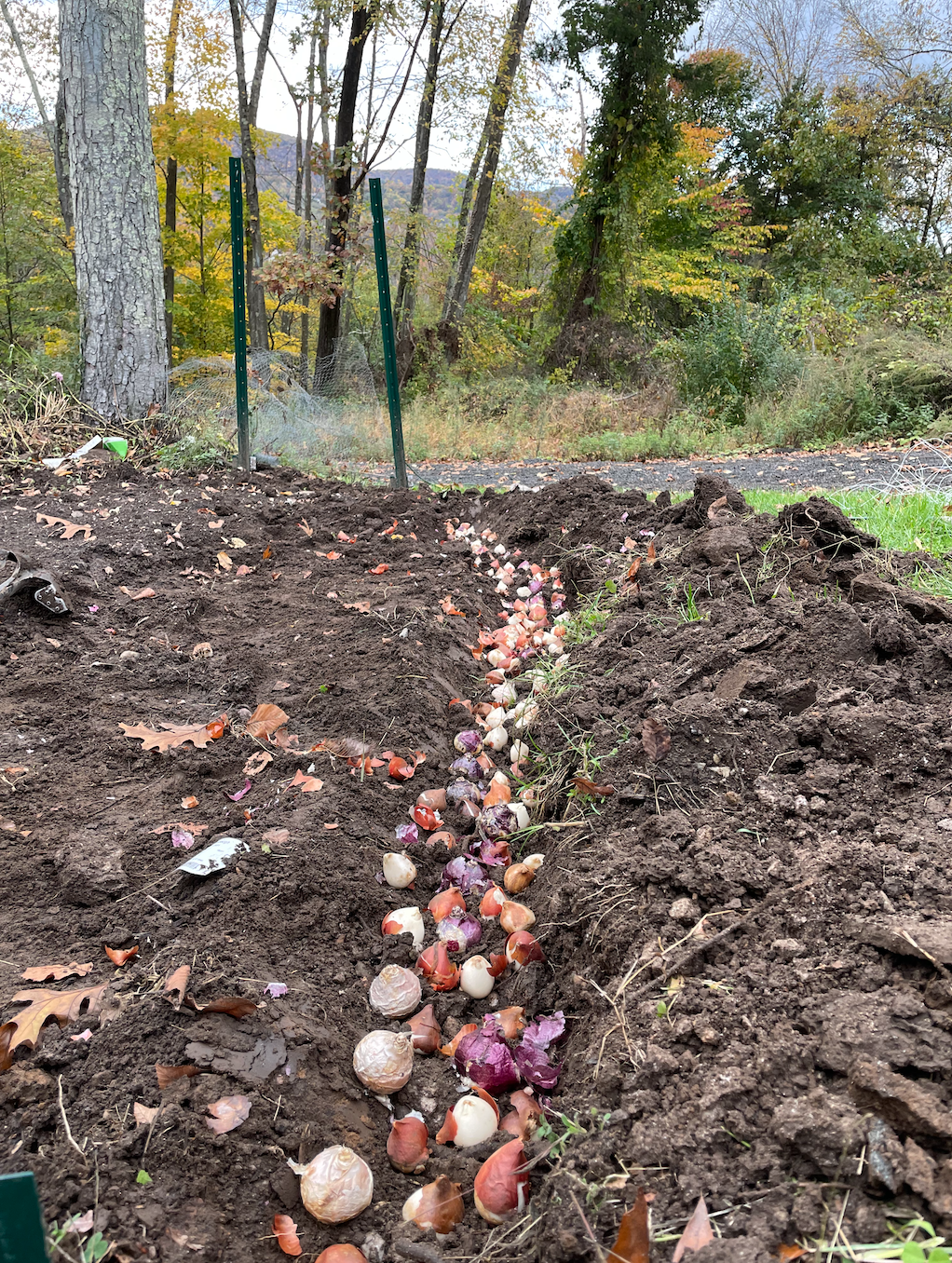
Tulips can be planted quite close, less than an inch from each other, similar to eggs in a carton. Once your bulbs are securely in place, water deeply and refill the hole with the soil you removed earlier. Add 1 to 2 in of compost on top to act as a mulch. Be sure to insert some type of stake so you remember where you planted them.
You can also plant tulip bulbs in pots! When choosing a container, remember that bigger is always better because larger pots don’t dry out as quickly and can hold more bulbs. Tulips can be planted quite densely in pots, similar to eggs in a carton.
To grow tulips solely for cutting, plant them in a wide trench. For the trench method, dig out a trench that is 3 ft wide and 6 in deep, piling all the dirt to one side. Sprinkle a light dusting of organic bulb fertilizer and rake it in, smoothing the bottom of the trench at the same time. Place the bulbs, pointed side up, close but not touching, just like eggs in a carton. Label each individual variety as you go.
Once the bulbs are in, water them deeply, letting the drench fill at least half full with water, which encourages vigorous root growth, in turn producing even larger flowers. Backfill the trench, mulch the top with an inch or 2 of compost.
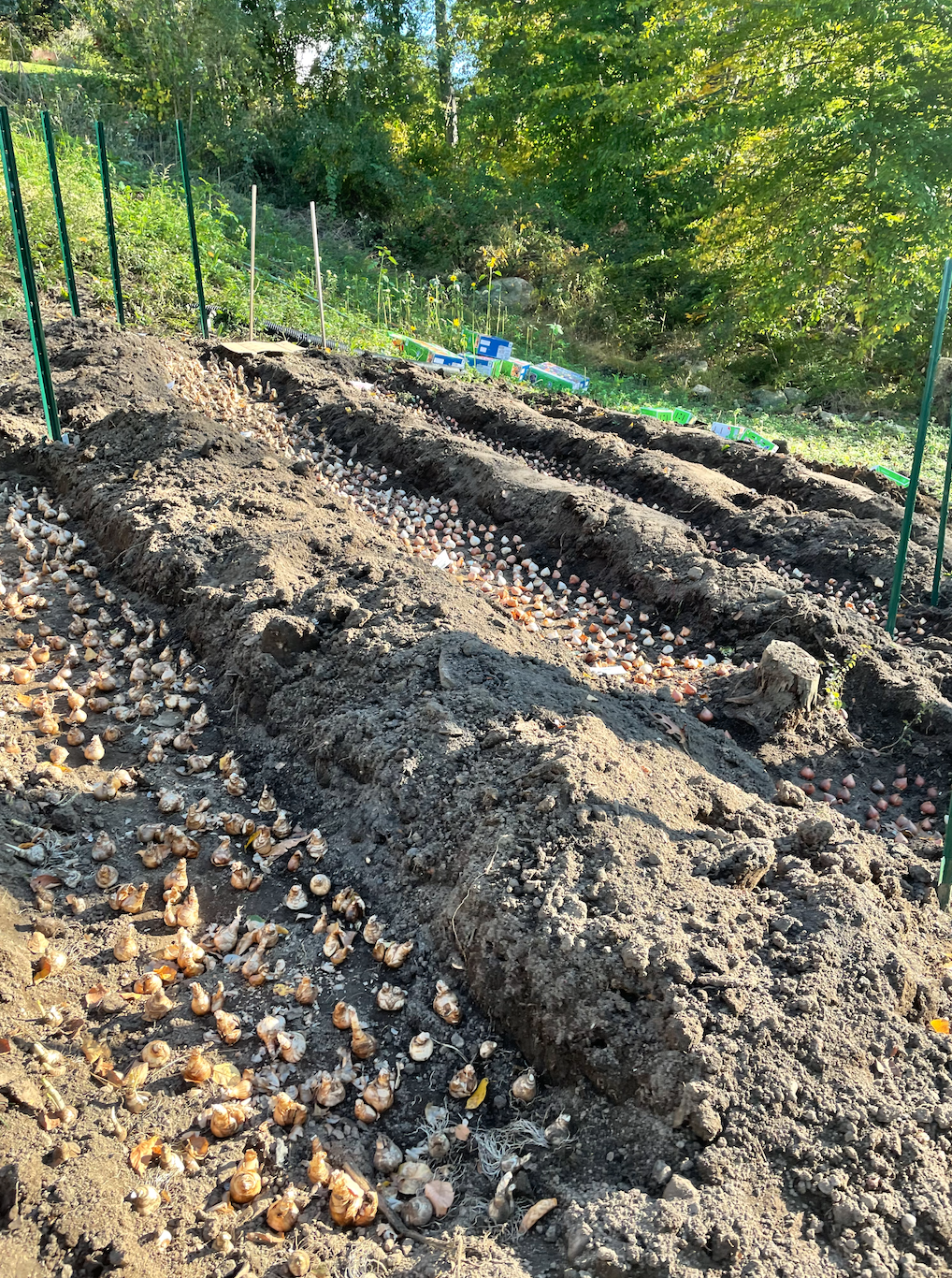
I treat our tulips as annuals, and pull up the entire plant, bulb and all, during harvest. This gives us maximum stem length, extended storage, and a long vase life. With the bulbs attached, tulips can be stored dry for weeks in the cooler, because they are still connected to their food source. When it’s time to use them, we simply cut off the bulbs and place stems into water with flower food.
If you want your tulips to return next spring, it’s important to leave at least two sets of leaves on the stem when harvesting to replenish the bulb and give it energy to bloom the following season. Flowers are typically smaller and of lesser quality in subsequent years but still put on a pretty show.
